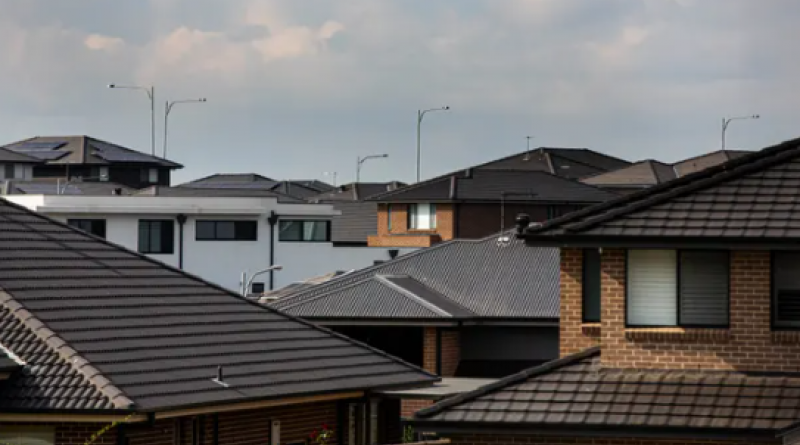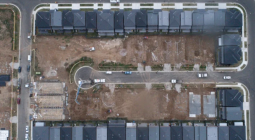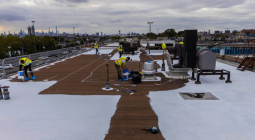Dark roofs to be banned in NSW, planning minister says

A light coloured roof could reduce temperatures inside the home by up to 10C during a heatwave, UNSW research shows.
The NSW government will move to ban dark roofs as part of its push to deliver more sustainable housing and reach its target of net zero emissions by 2050.
Speaking to the Committee for Sydney, planning minister Rob Stokes foreshadowed the policy switch to ensure all new housing has light-coloured roofing.
He said recent University of NSW research commissioned by the federal government found Sydney’s ambient temperatures could be reduced by up to 2.4C if dark roofing was ditched across the city. A light coloured roof could reduce temperatures inside the home by up to 10 degrees during a heatwave.
“This would have an enormous impact on the urban heat island effect in our city, and I will be asking the Department of Planning to implement this as part of our Net Zero Cities approach,” he told the Committee for Sydney on Wednesday.
“There are no practical reasons why we shouldn’t be ditching dark roofing on new homes permanently to ensure that future communities of Sydney’s west don’t experience the urban heat that many communities do now,” he said.
He also noted that in a new development in Wilton, in Sydney’s south west, the government had mandated back gardens be large enough to accommodate a significant tree.
He said changes to design and environmental planning rules would help the state achieve net zero emissions by 2050.
“A small investment now will reap enormous dividends in the future,” he said.
“The cost of us not acting will be far greater.”
Committee for Sydney chief executive Gabriel Metcalf welcomed the move.
“Of all the things that can be done about the problem of living with extreme heat in western Sydney, the easiest is requiring light coloured roofs. This makes all the sense in the world,” he said.
“Requiring developers to provide a real backyard that has room for a tree is going to make life for the future residents so much better, so we’re very happy to see that too.”
Stokes’ announcement comes as Guardian Australia examines the future of Australian housing in a special series, which includes an in-depth analysis of why good planning and important infrastructure is often swamped by commercial imperatives. One of the conclusions was the need for more government intervention to encourage more sustainable housing.
Stokes referred to the series in his speech and pointed to some of the changes the government was already implementing.
As well as developing a strategy to deliver net zero cities in NSW, Stokes announced that the main tool used in NSW to assess the energy and water efficiency of housing, known as Basix, was being upgraded.
The scheme works on a star rating which is achieved by using products such as thermal glass, insulation and solar panels, water tanks and plantings to achieve a score.
“We’re proposing to raise the current requirement for new residential dwellings from 5.5 stars to 7 stars,” he said.
“Our proposed changes will save another 150,000 tonnes of carbon a year, helping achieve net zero by 2050,” he said. “This is equivalent to 31 wind turbines running for a year or enough electricity to power 27,000 homes.”
But he said some of the best ideas for achieving a net zero city weren’t particularly new or exciting.
“Exercising thrift in resource use, using trees or roof colours to regulate urban heat, designing streets to encourage active transport, and focusing density around public transport are all important strategies that will help us to achieve our goal,” he said.
He rejected the argument that any increase in housing standards would lead to an increase in prices.
“We’ve seen subdivisions and developments with small blocks, small apartments and high yields still result in outrageous prices for new homeowners,” he said.
“If we don’t enforce strong sustainability standards for new homes, the prices will still go up regardless, along with the temperature,” he said.
“We must take practical actions now so we don’t end up with a city with soaring temperatures, no shade and air-conditioners running around the clock,” he warned.
Stokes said it was not just about new technologies, such as electric cars and batteries.
“Too often we see myopic technological solutions that reduce the environmental impacts on one aspect of an urban system, while reinforcing the underpinning dependencies,” he said.
The government’s new Design and Place State Environmental Planning policy will be exhibited later this year, he said.
17 November 2021
The Guardian




